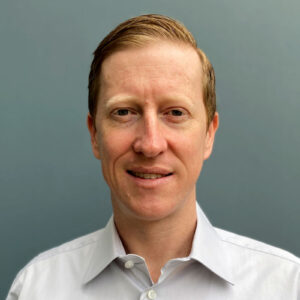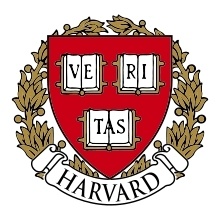Matt McGarrity is comfortable speaking to an audience. For the past ten years, the University of Washington professor has taught the highly popular COM 220: Introduction to Public Speaking course, teaching undergrads the keys to poise and delivery. He has won several teaching awards and is considered a leader in rhetorical research. His students love him, too—his 4.8 out of 5 on RateMyProfessor.com is one of the better marks out there and well above the 3.76 average for UW professors.

Earlier this year, though, McGarrity took on a new challenge: speaking to an empty room.
McGarrity and educational technology company Coursera partnered to offer McGarrity’s public speaking as a MOOC (Massive Open Online Course). What that meant for McGarrity was parsing and delivering his lectures, which are normally presented an hour at a time over a 10-week period, into much smaller video segments.
With Intro to Public Speaking three weeks into its run, I caught up with McGarrity on July 3rd to speak about the challenges of MOOC-ifying a classroom course, creating a usable learner engagement strategy, and his role as a de facto ‘MOOC Ambassador.’
Andrew Winner: Now that you’ve done all the hard work of filming the lectures and the course is out there, how are things going?
Matt McGarrity: Well, we’re still recording some lectures so we’re not entirely done with course! We’re out in front of it, but there’s just so many hours of recording. We’ve now nailed down the basic procedure of recording that stuff and so I’m anxious for the class to move into Week 3.
Certainly, in the discussion forums one of the pieces of feedback that came up was ‘Boy, he speaks so fast in Week 1!” Hopefully that’s less of an issue going forward.
AW: Yes, I would imagine, with so many people taking the course having English as their second or third language, that’s something that might be a concern. It’s tough to think of everything before you get started.
MM: Yeah. Fortunately, the Coursera platform—and other platforms do this as well—allows you to modulate that. You can click playback speed down to three-quarters and it has closed captions. That’s important given that so much of the course is non-native English speakers.
AW: So, one thing I wanted to ask you about was engagement. I make a lot of these types of courses—I haven’t done any MOOCs yet—but one thing I always take into consideration is user engagement. In the conversations you’ve had with Coursera and the team that you’re working with, what’s your plan to keep the dropout rate low and keep people engaged in the course?
MM: For me, I look at mine as different from a lot of other MOOCs. In a computer science MOOC, for example, it’s about doing that work. That’s trackable work—they can say this is the weekly assignment, now go do it. I can do that as well, but I look at my course more as educational broadcasting. For me, the number I’m interested in is video views. For something like this, which is more of a workshop model, that’s more the metric of success. Are people continuing to watch the content? That’s important because the way I’m asking them to engage with the class—asking them to practice at home or in front of a screen—I will never see.
Those very traditional metrics for engagement—how many quizzes did they complete—are still there, but this is a different beast.
How am I keeping them engaged? By making the course something they want to come back to and making sure that each one of those standalone 8-12 minute video lectures conveys something meaningful.
AW: When it comes to success metrics, I think, fair or not, people are going to zoom in on the number of people of taking the course. Does that concern you and do you know what the latest enrollment numbers are?
MM: Right now [ed. note: this interview took place on July 3rd] we’re at about 106,600, so it’s probably going to be 107,000 by the end of the day. We usually get one to two thousand sign ups a day.
To some degree, so much of the talk about dropout rate misinterprets the initial enrollment figure, right? The threshold one must cross to sign up for the course is a button click. So they’re talking about the button click, which may not be a genuine enrollment. It’s like Facebook accounts—maybe there are so many million, but a lot of them are empty. So, the question is of those enrollments, is active students from Week 1 to Week 10. That’s probably a better way to look at it.
Right now based on video views, of the 107,000 that signed up, I’ve got about 65,000 active users. That really sets my high-water mark.
AW: Since it’s such a new platform I’m sure one of the roles you’ve fallen into is that of a ‘MOOC Ambassador.’ What has the feedback been like from the UW Comm department, the university as a whole, and your colleagues around the country?
MM: Certainly the Comm department has been nothing but supportive. The University of Washington is keen on being a leading name in online education. Where I’ve had to explain, if not advocate, is within my discipline.
A lot of the reporting on MOOCs nationally portrays MOOCs as an unknown and as a potential threat to brick-and-mortar institutions. But again, the way I’m looking at my own course is as educational outreach. As public broadcasting. So it very much sits alongside what is being done in classrooms here in the US.
I look at my numbers and 40 percent of the respondents to a survey already have an advanced degree. That’s probably more reflective of Coursera’s penetrations than my own class, but the people are in my class that are of traditional college age is a very small percentage. People are looking at this course as professional development.
I don’t see the MOOC that I teach as a threat to traditional universities or to the discipline, rather just the opposite. It’s the sort of thing a public university should be doing: broadcasting its knowledge.
Now I’m no naïve bunny: there’s money to be made on these things, and they’re trying to monetize it in various ways. But that ain’t mine. I’m a true believer in that sense. I’m not really making any money off this and so no one else is.
Sign up page - Introduction to Public Speading by Dr. Matt McGarrity









